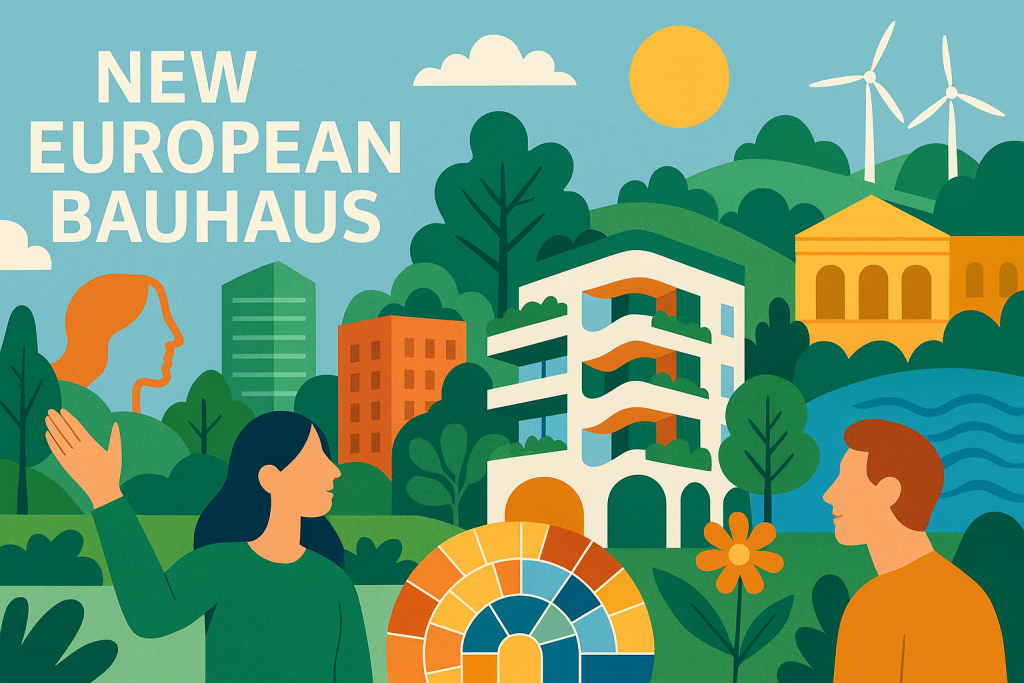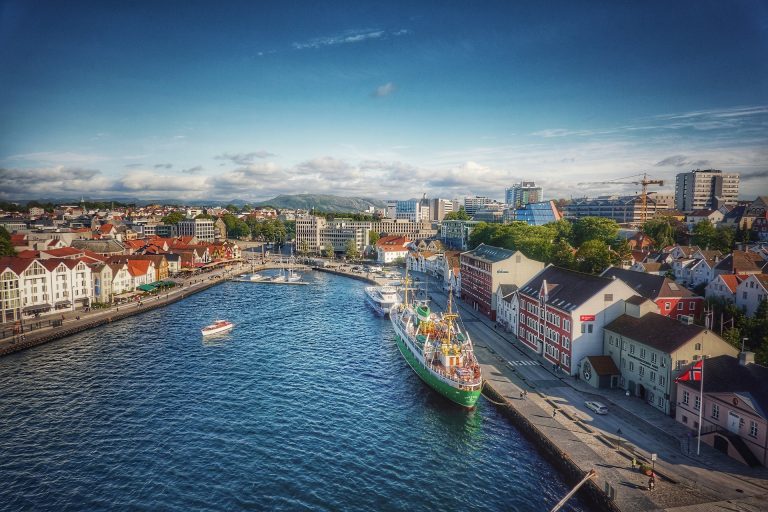“Why do we need the New European Bauhaus? Because we need to bring the green transition closer to citizens.” European Commission
A short introduction to the new European Bauhaus (NEB).
What’s Bauhaus?
Founded in 1919 by architect Walter Gropius in Weimar, the Staatliches Bauhaus, known as the Bauhaus, was a German art school that helped to birth an art movement and the careers of countless artists and architects.
Named after the German term meaning literally ‘house of building, ‘ the Bauhaus focused on the concept of Gesamtkunstwerk (the ‘total work of art’), aiming to bring together all the arts in one place under a unified ideology, encompassing fine art, industrial design, graphic design, typography, interior design, and architecture. The goal was to create collaboratively, across disciplines.
The arrival of the new European Bauhaus.
The NEB initiative was introduced in 2020 by Ursula von der Leyen in conjunction with the European Green Deal and the goal of making Europe the first climate-neutral continent by 2050. In 2021, the Commission published the Communication presenting the concept of the NEB, and began promoting its values through several calls for proposals.
Why now?
NEB is an answer to pollution, climate change, the loss of biodiversity, and the exhaustion of natural resources, the increasing frequency of extreme weather events such as heat waves, wildfires, and flash flooding leads to food insecurity, lack of access to drinkable water, degraded housing conditions and public health, forced displacement, and many other issues. Because it affects us all, the transition to sustainability must include everyone.
Understanding its key principles:

What’s NEB? How do we use it?
Three core values:
Sustainable means integrating nature-based solutions, energy efficient technologies, renewable energy, circular methodologies throughout the building life cycle, addressing the climate goals, carbon neutrality and preserving the biodiversity on the planet. It is about creating a positive relationship with nature.
Beautiful means looking beyond the functionality and recognising the inspirational power of aesthetic and design in the human experience. A well-designed built environment cultivates a sense of place, identity, and cultural expression, evoking emotions and connecting individuals and communities. It concerns the aesthetic, quality of experience and style beyond functionality Together means that no one will be left behind.
Participatory approaches strive to acknowledge diverse perspectives, ensuring a sense of belonging, social cohesion, and well-being for all. Spaces designed for all and by all, that are accessible and affordable, from valuing diversity to securing accessibility and affordability.
Three key working principles:
The participatory process – Change that lasts starts with people. The NEB encourages a bottom-up approach where citizens, artists, architects, and local actors are invited to co-create solutions tailored to their communities. Participation isn’t just about consultation — it’s about real influence and shared ownership in shaping the places we live in.
Multi-level engagement – No transformation happens in isolation. NEB promotes collaboration across all levels — from EU institutions to national agencies, local governments, and grassroots initiatives. This layered approach ensures alignment of vision, funding, and implementation, while keeping the needs of local communities at the heart of the process.
Transdisciplinary approach – Great ideas emerge when disciplines intersect. NEB thrives on collaboration between fields like urban planning, ecology, design, technology, and the arts. This diversity brings fresh perspectives and holistic solutions that respond not only to environmental goals, but also to cultural and social needs.
But what difference does it make?
“The aim is to provide all citizens with access to goods that are circular and less carbon-intensive, that support the regeneration of nature and protect biodiversity.”
NEB is introduced as a new way to observe urban design, it is a strategy, a community, and a political vision of urban transformation. It focuses on understanding participatory projects, how the population should be involved with changes in their urban environment. As such, projects should stem from and be implemented through participatory and trans-disciplinary processes anchored at a local level.
How Does It Work in Practice?
A range of tools and initiatives have been developed to help put the NEB into action:
– NEB prizes to promote the best bottom-up projects
– Calls for proposals integrating NEB objectives in EU programs
– NEB-LAB to communicate and increase awareness and mobilisation
– A strong link between NEB and other sustainable missions, such as Net Zero Cities and Horizon Europe
Closing words
As we understand the New European Bauhaus concepts, we are called to question our daily habits, as it is not only a guideline but a way of understanding and changing our surrounding urban world. Working together to improve our quality of life, present and future. It is at the scale of each street, each neighbourhood, each community that the NEB becomes real. Demystifying the NEB means embracing it in our everyday urban planning practices.
The New European Bauhaus is more than a policy framework. It’s an invitation: to dream, to co-create, and to actively shape the future of the places we live in. It’s about improving our quality of life – with care for the planet, respect for people, and love for the spaces we share.
At UrbanizeHub, we believe that the future is built on every street, in every neighborhood, through every project that brings more life to our cities. NEB is already here – and we’re ready to activate it, together 💚
References:
About the initiative—European union. (n. d.) https://new-european-bauhaus.europa.eu/about/about-initiative_en
Rotondi, C. (2024). The new european bauhaus : The ‘simplexity’ of innovation in design. https://iris.uniroma1.it/handle/11573/1720203
Campbell, T. (2021, avril 2). Art movement : Bauhaus. Artland Magazine. https://magazine.artland.com/art-movement-bauhaus/
Built4People. (2023). New European Bauhaus: A handbook. European Commission. https://built4people.eu/wp-content/uploads/2023/10/New-European-Bauhaus-a-handbook.pdf







